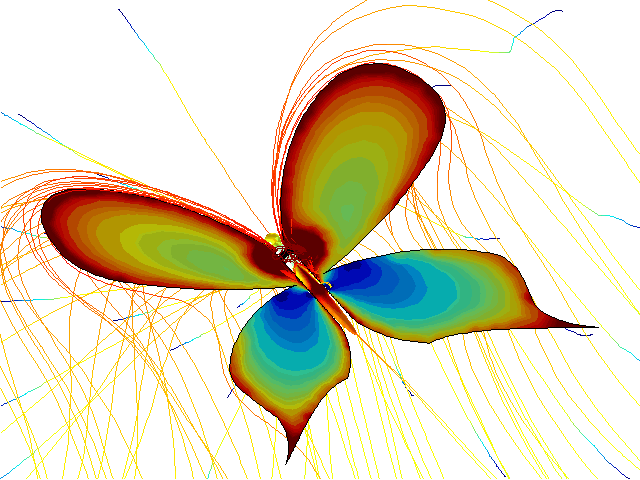
These days, RFID tags are used in many applications. Ranging from packing slips to ID badges, RFID tags are embedded into many different objects by businesses everywhere. Once tagged, these can be tracked to improve functions such as inventory management, security, manufacturing processes, and more. You can also implant an RFID tag into animals, such as cattle or pets, so that they can be found in case of theft or loss, for instance. Wild animals that are found far from their natural habitats are sometimes tagged upon rescue so that their journey back home may be tracked. What if we, instead of tagging a wild animal to track its path to safety, created a robot entirely made out of an antenna with the intent to send and receive communications? Say, a small robotic butterfly for example?

Basic Concept of RFID Tags
The basic concept of RFID tags is in essence simple. Basically, you store information in an antenna and then you bounce radio waves off of that in order to send and receive information stored in the tag. Of course, you will also need some software to run the scanning and receiving process and to store the information from the tag. There are two different types of tags: “passive” and “active”. Passive tags are the simpler of the two, as they have no power source and are used only to bounce stored information back from the tag. Active tags include a built-in battery, providing better range and a stronger signal. That makes these tags better for longer distances and more intensive operations. Active tags also provide dynamic information, i.e. environmental information that is not originally stored in the tag.
Multiphysics Perspective on the Possibility of RFID Butterfly Robots
My brilliant colleague, Jiyoun Munn, does some great work with RF and RFID applications here at COMSOL. Being a creative guy, he wondered if it was possible to create an RFID antenna in the shape of a butterfly, and if so, how would we communicate with it? Author disclaimer: Whenever the topic of RFID tags is broached, debates around ethics, security, and privacy inevitably arise. Let’s ignore this for now, and just enjoy the prospect of communicating via an RFID butterfly robot from a physics and engineering perspective.
In a recent conversation, Jiyoun said that “the typical size of [butterfly] wings in my mind seems good enough for the UHF or L-band radio communication if they are conductive.” “The main problem,” he noted, “would be proper impedance matching to a communication chip transponder with regard to an arbitrary shape and configuration of wings.” So what did he do? He ran the parametric sweep defining the wing configuration in terms of angle at one UHF RFID frequency with the RF Module, and checked the input impedance. Here is the RFID butterfly model he created:

At some angular range while the wings are flapping, the model shows that the whole dielectric body and conductive wings work as an efficient antenna. In other words, the simulated input impedance of the pair of wings provides the complex conjugate matching for the maximum power transfer with a given UHF RFID chip transponder. The flapping mechanism realizes a mechanical impedance tuning scheme by nature. The only remaining task is, of course, the actual manufacturing of a tiny butterfly robot. But we will not get into that here.




Comments (1)
tayyab jatoi
May 26, 2013great idea, nice work Jiyoun Munn !!!!!!!!!!!!!!!